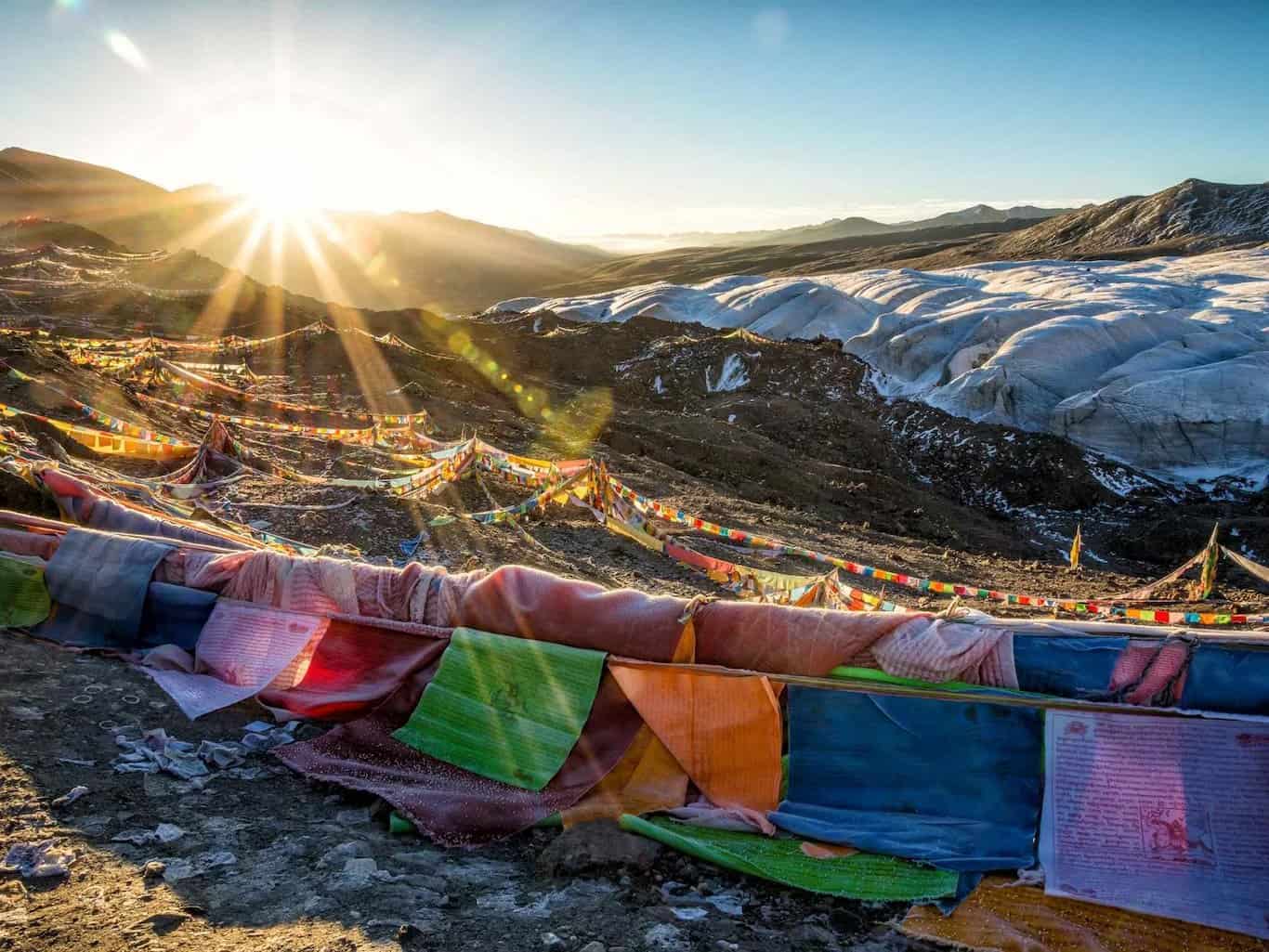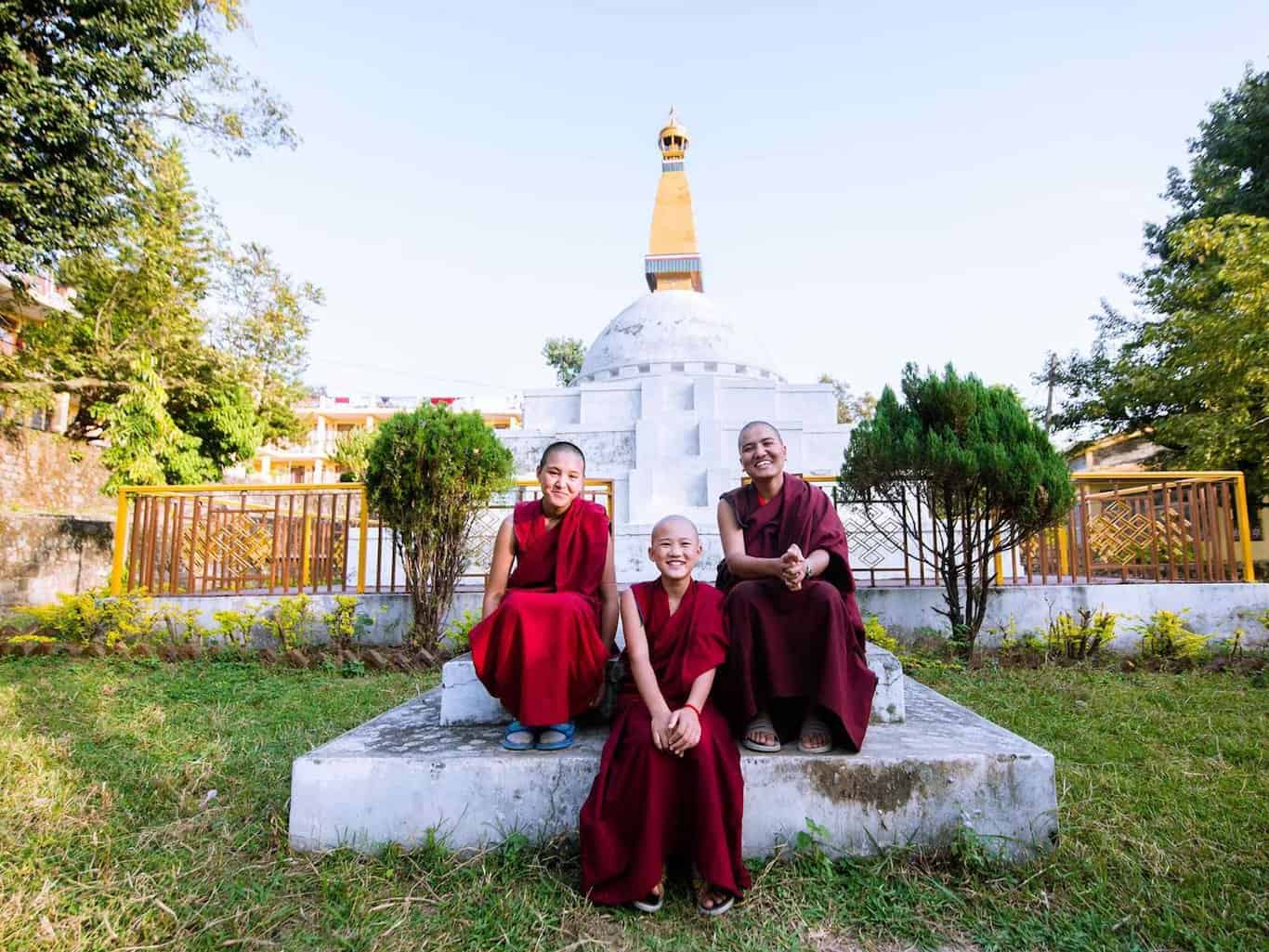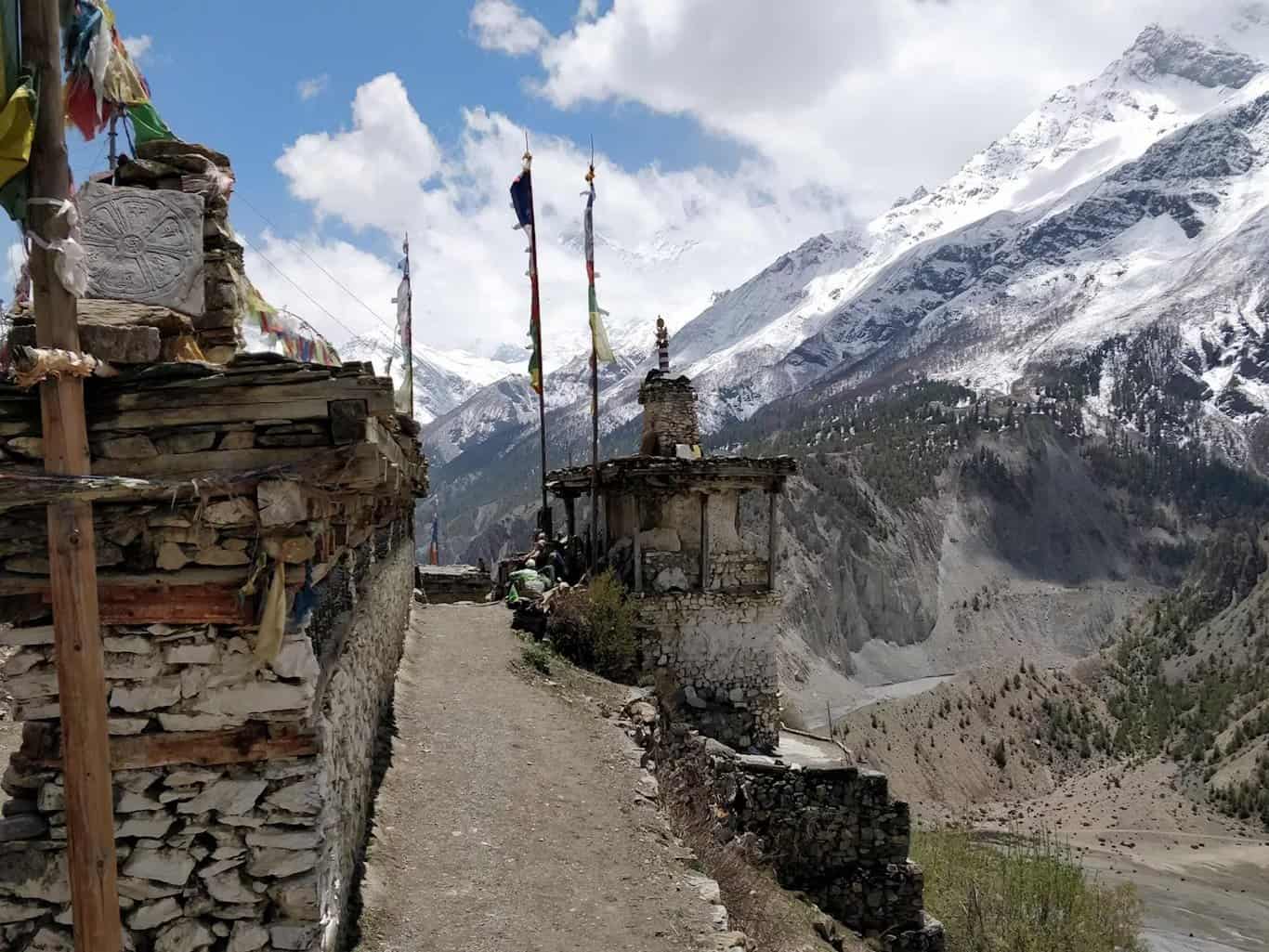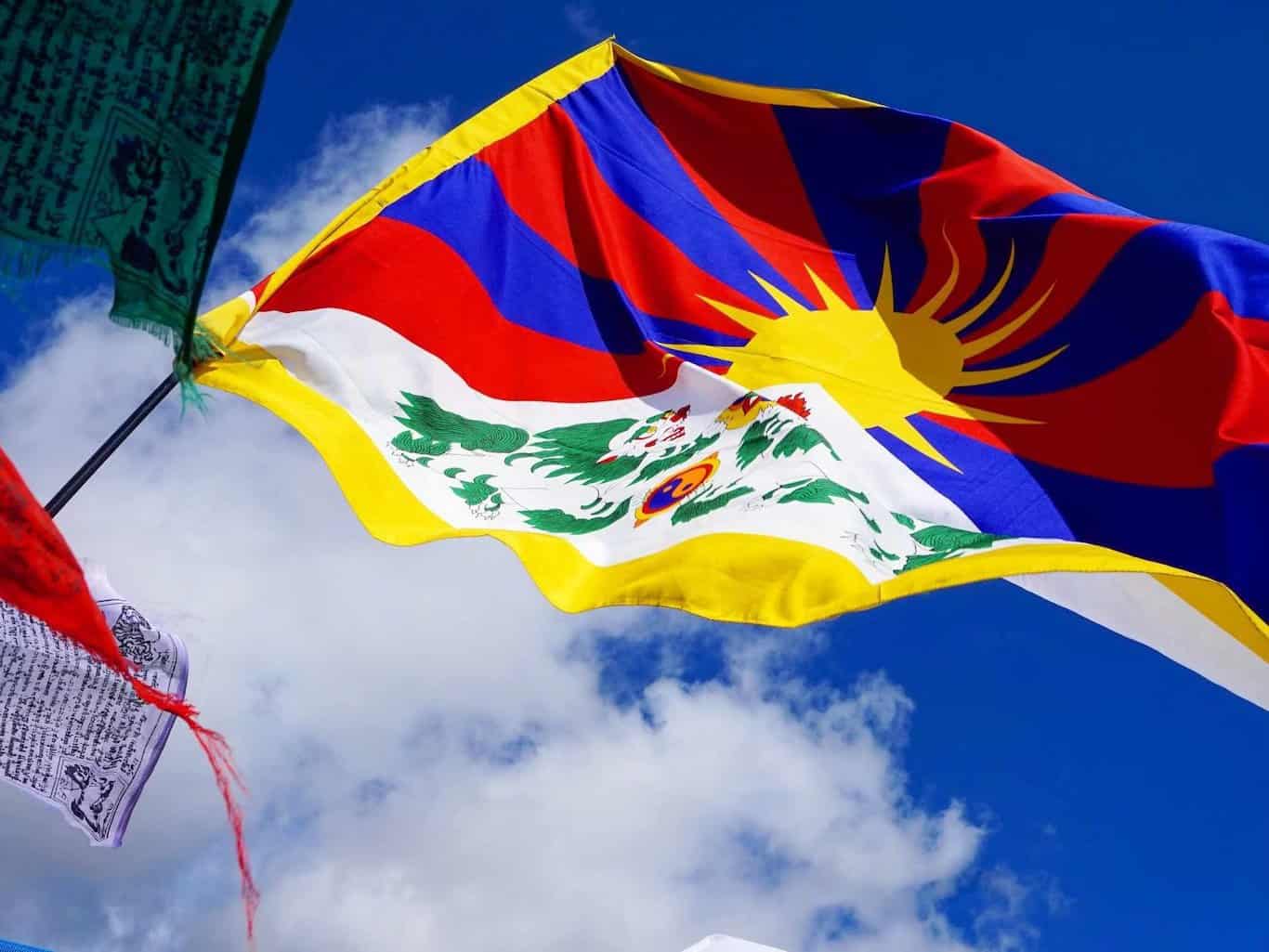From a pioneering female explorer to the Tibetan communities getting savvy about sustainability, here are ten things you probably didn’t know about Tibet.
10 things you never knew about Tibet
1. 2019 marks 60 years since the Tibetan National Uprising
We don’t know how you spent your teenage years, but back in 1950, when the Dalai Lama was just 15, he had to fend off 40,000 Chinese troops while negotiating terms to protect the Tibetan way of life.
The troops had been marched in by the newly established Chinese Communist regime who decided it was about time Tibet became a permanent part of the People’s Republic of China. The ongoing resistance to Chinese rule culminated in the Tibetan National Uprising on 10 March 1959. After the failed revolt, many Tibetans took the treacherous journey through the Himalayas to find refuge in India and Nepal.
2019 marks 60 years since the Dalai Lama was forced to flee his country alongside the 150,000 or so Tibetans who now live abroad.

2. Tibetans are making the self-sufficient dream a reality
With the help of Tibet Relief Fund, Tibetan people are rebuilding their lives and keeping their culture and traditions alive. Following the devastating 2015 earthquakes in Nepal, the charity taught villagers how to construct safe (and crucially) earthquake-resistant new homes using traditional earth brick making techniques. Armed with this knowledge and the right tools, it is hoped exiled Tibetans will no longer need to rely on outside help or expensive imported materials next time a natural disaster strikes.
3. Tibetans are wising up to waste
When Taste Tibet co-founder Yeshi Jampa was growing up the word recycling wasn’t even a word in his vocabulary.
“It was something that we all did instinctively, given the scarcity of materials at our disposal, plus the fact that most – if not all – of what we used was biodegradable or ripe for upcycling,” he writes in a blog on the issue.
Now, however an influx of processed, packaged food has left the plateau with an ever-mounting plastic problem, requiring equally mighty solutions.
At Yushu, a small county in Tibet, a solar-powered Trashpresso machine has been busy scooping up plastic waste and squishing it into tiles for walls and floors.
Elsewhere, there’s the Clean Upper Dharamsala project, which works with Tibetan refugees in northern India to transform discarded paper, cardboard and cotton into desirable products. Take your pick from handmade meditation mats to yak milk soap safe in the knowledge you’re supporting Tibetan livelihoods while helping to clean up the environment. It’s a win win for people and planet.

4. Tibet is known as ‘The Roof of the World’
At a dizzying three miles (4,500 metres) above sea level, Tibet is not only home to the world’s highest peak, but also its roads, towns and toilets are among the highest in the world.
Climbers looking for enlightenment in the clouds can even stay at the highest monastery in the world. Located at the base of Mount Everest – Rongbuk is perfectly located to catch the sun rise and set over Chomolungma (The Tibetan name for Mount Everest, meaning “Goddess Mother of the world” or “Goddess of the Valley”).

5. Tibetans have evolved to live at high altitudes
Altitude sickness is serious stuff, it can lead to nausea, confusion, breathlessness and even death. But while you might be reaching for a sick bucket in your first couple of days, you’re unlikely to see a sherpa suffering in the same way. Why?
Unlike most visitors, Tibetans are genetically adapted to life 14,800 ft above sea level. Researchers have found that one of the main reasons for Tibetan’s survival is that they exhale more nitric oxide compared to people living at sea level, in layman’s terms this helps the blood to flow, which in turn keeps the heart working at a normal pace.
Not lucked out with Tibetan genes and planning a trip? Better stock up on altitude sickness tablets.
6. Flags aren’t just for decoration
The sight of the Himalayas framed by strings of colourful, weather beaten flags flapping in the mountain breeze is certainly Insta-worthy. But for Tibetans, the ritual of stringing up colourful flags goes beyond the decorative.
In fact, Tibetan prayer flags or ‘Lung tas’ represent peace, wisdom, compassion and strength, with many carrying Buddhist mantras and symbolism. The Tibetans believe the wind carries these messages of good will into the surrounding environment.
You can order traditional cotton prayer flags from Tibet Relief Fund, so you spread good vibes wherever you are in the world. Bring on the windy days!

7. Tibet is known as the third pole
There’s the north pole and the south pole and then there’s the Tibetan Plateau aka the third pole. This glacial region supplies fresh water to more than 1.35 billion people across Asia. Worryingly, this water supply faces an uncertain future.
According to a report published by the Chinese Academy of Sciences’ Institute of Tibetan Plateau Research Tibet’s glaciers warmer than they’ve ever been in the last 2,000 years. Additionally, these majestic icy reservoirs are at risk of being drained by bottled water companies, who are keen to monetise the mountain-fresh aqua.
8. Speaking out for Tibet can get you into trouble
Over the years, many celebrities have drawn attention to the plight of the Tibetan people, much to the annoyance of China. Brad Pitt, Bjork and countless other stars have either been banned or had their work censored there.
In 2016, singer and actress Lady Gaga shared posts of her meeting with the Dalai Lama across her social media channels resulting in her being banned from performing in China. When she won the Oscar for A Star is Born earlier this year, China’s coverage censored her face out, with a poorly added blurred square.
“The journey saw her scale 19,000-foot peaks while disguised as a Tibetan monk and without the modern gear of today’s hikers”
9. Alexandra David-Néel was the first Western woman to cross the Trans-Himalayas
1924 is better known as the year George Mallory and Andrew Irvine lost their lives during one of the earliest ascents of Everest. Lesser known but just as captivating is the story of Belgian-French explorer, author and Buddhist scholar Alexandra David-Néel, who traversed both physical and societal barriers to become the first woman to travel to Tibet’s capital Lhasa, which was then closed to foreigners.
The journey saw her scale 19,000-foot peaks while disguised as a Tibetan monk and without the modern gear of today’s hikers. It’s an epic tale of female resilience and determination and one Tibet Relief Fund is familiar with, having worked tirelessly with Tibetan women over the years. Projects such as the Rogpa Women’s Craft Centre mean impoverished Tibetan women living in exile in India have access to fair wages, free childcare and sustainable employment.
10. Tibetan monks are tech savvy
According to the Telegraph, today’s Tibetan monks are increasingly turning to social media to promote Buddhist teachings, but that’s not the only link between tech and Tibet.
Ever use the meditation app Headspace? With Tibet’s rich history of Buddhist practice it’s perhaps not surprising that its co-founder Andy Puddicomb was ordained as a Tibetan Buddhist monk. Before setting up the app, he embarked on a ten year journey which saw him spend up to 18 hours a day meditating in the Himalayas.
If you’re interested in becoming a little more zen but can’t spare ten years, put 6 July in your diary.
To celebrate the Dalai Lama’s birthday, and mark 60 years of work with the Tibetan community, Tibet Relief Fund is hosting a mass meditation party.
You can join the Meditate for Tibet event from the comfort of your living room (so no need to blow your carbon budget on Tibet Airlines).
Just download one of the four Tibet-focused guided meditations, make a donation and prepare for that unusual feeling of inner calm.










